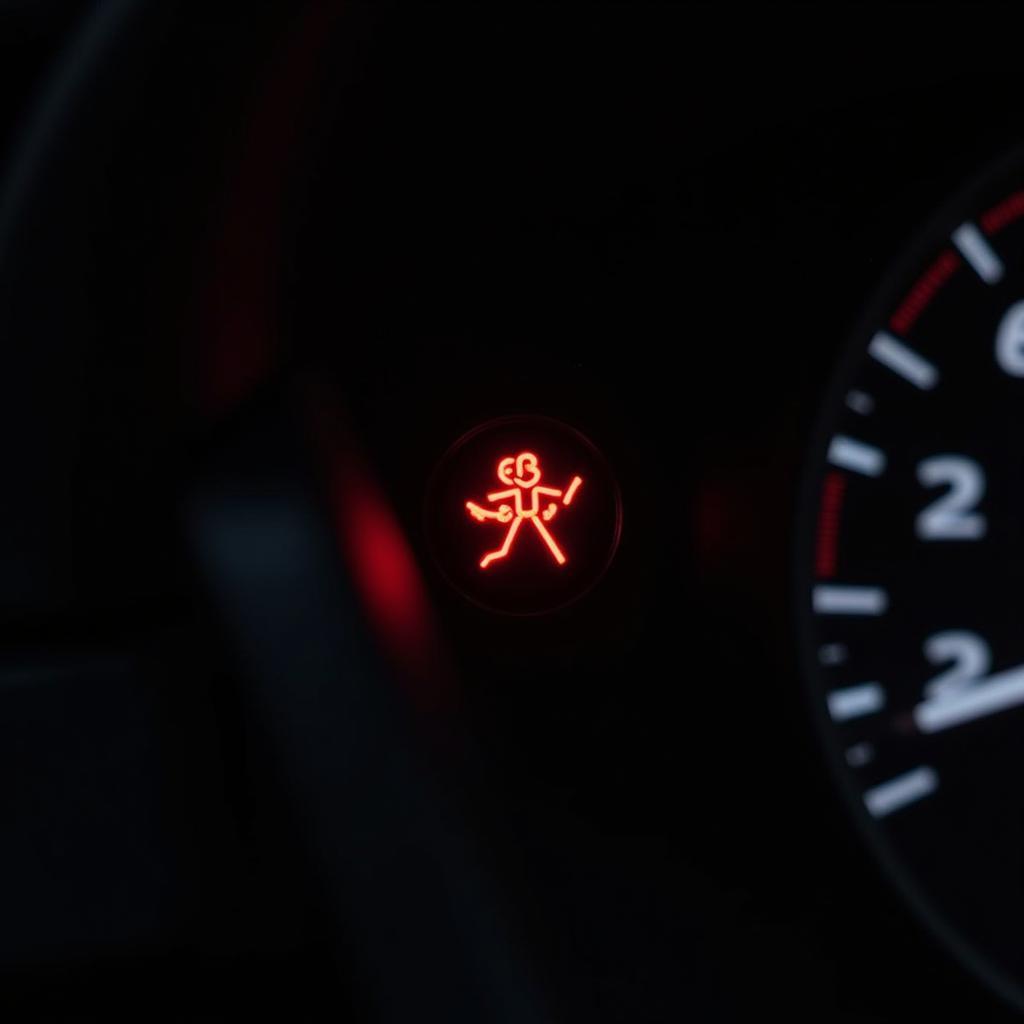The 2003 Buick LeSabre brake warning light can be a source of anxiety for any driver. Understanding why this light illuminates and how to address the underlying issue is crucial for your safety and the longevity of your vehicle. This comprehensive guide will cover the common causes, diagnostic steps, and solutions for the 2003 Buick LeSabre brake warning light.
Understanding Your Buick LeSabre’s Brake System
The brake system in your 2003 Buick LeSabre is a complex network of components working together to ensure safe and effective stopping power. It’s comprised of the master cylinder, brake lines, brake calipers, brake pads or shoes, and the all-important brake fluid. The brake warning light serves as your vehicle’s way of communicating potential problems within this system.
Common Causes of the Brake Warning Light
Several factors can trigger the brake warning light in your 2003 Buick LeSabre. One of the most common culprits is low brake fluid. This can be due to a leak in the brake lines or simply needing a top-up. Another possibility is worn brake pads. As your brake pads wear down, they put more pressure on the brake fluid reservoir, triggering the warning light. A faulty parking brake switch can also be the cause, illuminating the light even when the parking brake is disengaged. Less common, but still possible, are issues with the ABS (Anti-lock Braking System) module or a malfunctioning brake sensor.
 Checking the Brake Fluid Level in a 2003 Buick LeSabre
Checking the Brake Fluid Level in a 2003 Buick LeSabre
Diagnosing the Problem: A Step-by-Step Guide
If your brake warning light comes on, don’t panic. Here’s a methodical approach to diagnose the problem:
- Check the parking brake: Ensure the parking brake is fully released.
- Inspect brake fluid level: Open the hood and locate the brake fluid reservoir. Check if the fluid level is between the minimum and maximum lines. If it’s low, add the appropriate brake fluid.
- Examine brake pads: Visually inspect your brake pads for wear. If they appear thin or worn, it’s time for a replacement. You can often achieve this with a car stereo digital radio bluetooth playing your favorite tunes.
- Consult a professional: If the problem persists after checking these basic elements, it’s crucial to consult a qualified mechanic. They have the tools and expertise to diagnose more complex issues, such as problems with the ABS system or brake sensors.
“Ignoring a brake warning light can lead to costly repairs down the line,” cautions automotive expert, Michael Stevens, ASE Certified Master Technician. “Addressing the issue promptly can prevent further damage and ensure your safety on the road.”
Solutions and Repairs for a 2003 Buick LeSabre Brake Warning Light
Once you’ve diagnosed the cause of the illuminated brake warning light, you can take the appropriate steps to fix it. Low brake fluid often requires a simple top-up. Worn brake pads will necessitate a replacement. For issues with the ABS system or other complex components, professional repair is recommended.
Why is my 2003 Buick LeSabre brake warning light on?
The brake warning light can indicate low brake fluid, worn brake pads, a faulty parking brake switch, or problems with the ABS system.
Can I drive with the brake warning light on?
It’s not advisable to drive with the brake warning light on. It signifies a potential problem with your braking system, which could compromise your safety.
Perhaps you are considering a brst option for no bluetooth car radio. Focus on safety first.
Preventing Future Brake Problems
Regular maintenance is key to preventing future brake problems. This includes routine brake inspections, timely brake pad replacements, and keeping your brake fluid at the correct level. This information is crucial even if you utilize remote diagnostics, software programming, and installations, such as those used with a bt2 bluetooth radio for car. Regular physical checks are still vital. “Preventative maintenance is the best way to avoid costly repairs and ensure the optimal performance of your braking system,” advises Sarah Miller, certified automotive technician.
You can find more information about connecting your phone via Bluetooth in our article on how do i bluetooth my phone to my car radio.
Conclusion: Addressing the 2003 Buick LeSabre Brake Warning Light
Addressing the 2003 Buick LeSabre brake warning light promptly is paramount for your safety and the health of your vehicle. By understanding the potential causes and following the diagnostic steps outlined in this guide, you can effectively troubleshoot and resolve the issue. Remember, when in doubt, consult a qualified mechanic for expert assistance.
And if you’re looking for some good tunes while driving, check out our guide on the best radio station for car bluetooth.
FAQ
-
What does the brake warning light mean? It indicates a potential problem within your brake system, such as low brake fluid or worn brake pads.
-
Is it safe to drive with the brake warning light on? No, it’s not recommended. Driving with a potential brake issue could compromise your safety.
-
How often should I check my brake fluid? It’s a good idea to check your brake fluid level at least once a month.
-
How often should I replace my brake pads? Brake pad lifespan varies, but they typically need replacement every 25,000 to 70,000 miles.
-
What is the ABS system? The ABS (Anti-lock Braking System) prevents wheel lockup during hard braking, enhancing control and stability.
-
Can a faulty parking brake switch trigger the brake warning light? Yes, a malfunctioning parking brake switch can cause the light to illuminate even when the parking brake is disengaged.
-
What should I do if I’ve checked everything and the light is still on? Consult a qualified mechanic for further diagnosis and repair.

